Advocates Pumped for ‘Car-Free’ Market
3:44 PM PST on January 24, 2020
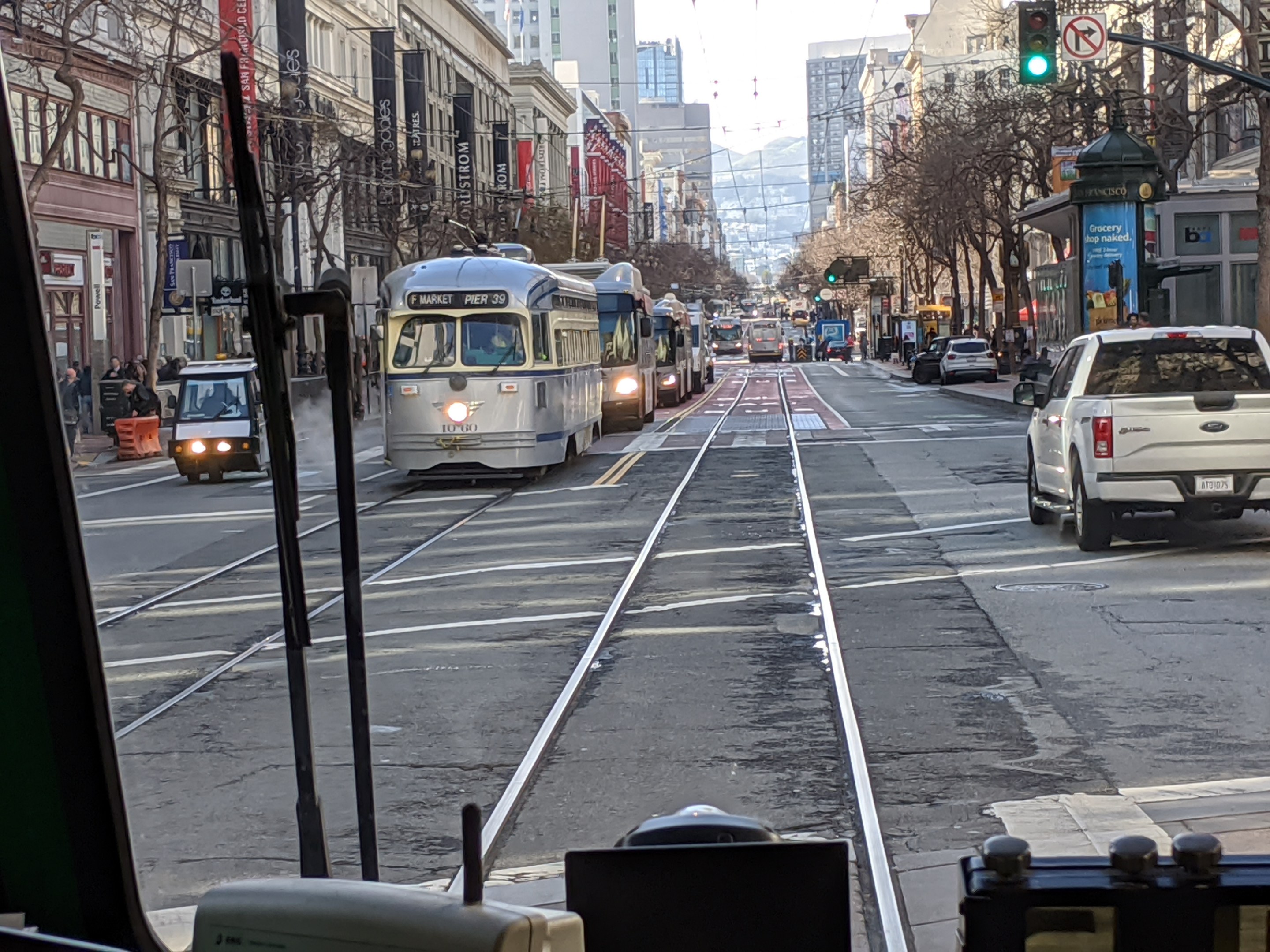
Market Street in downtown in the before times. Photo: Streetsblog/Rudick
Next week, on Wed., Jan. 29, private cars will be banned from Market Street, eastbound from 10th to Main and westbound from Steuart to Van Ness. Uber/Lyft will also be banned.
Advocates for safe streets are overjoyed. "Car-free market street has been talked about for decades, and we’re thrilled that next week it will finally happen," wrote Livable City's Tom Radulovich, in an email to Streetsblog. "We are excited for this next step towards designing people-centered, safe streets that prioritize sustainable trips and public transit," added the San Francisco Transit Rider's Cat Carter. "As San Francisco marks this accomplishment in shifting away from the primacy of private cars, we're eager to improve more streets for public transit and all transit riders."

SFMTA crews have been getting prepared for this milestone for some time. City crews "... have already installed signs that will be unveiled on January 29th," explained the agency in a blog post. "In addition, we’ve created new pedestrian safety zones, added new loading zones and are extending the Muni lanes down Market Street."
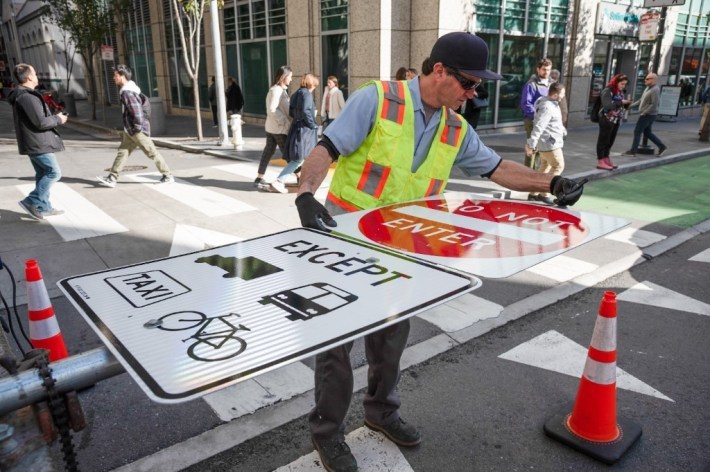
Of course, the new signs and turning restrictions are part of a years-long, ongoing effort to reduce jams and safety problems on San Francisco's iconic central corridor.
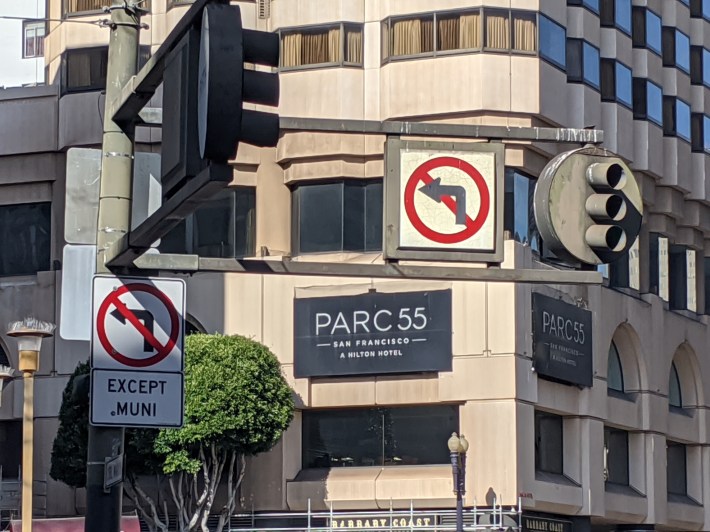
And the existing turning restrictions haven't always been followed, sometimes leading to tragedy. That's why "Enforcement will be key to Market's success," wrote Walk San Francisco's Jodie Medeiros in an email. "The SF Bicycle Coalition has emphasized the need for the City to educate everyone who uses Market Street about the impending turn restrictions, and we have our own plans to mobilize volunteers on the street to collect feedback once those turn restrictions take effect," added Brian Wiedenmeier of the San Francisco Bicycle Coalition.
He stressed that physical barriers, such as concrete diverters, and curb-protected bike lanes, are what's ultimately needed to keep Market Street safe for cyclists and pedestrians. They are especially important since this 'Better Market Street' plan isn't actually banning cars from driving down Market Street, as is often reported--it's just banning private cars. Unfortunately, drivers of taxis and city vehicles have injured and killed their share of vulnerable road users on Market Street too. And, of course, private cars will continue to cross Market Street at intersections.
Concrete protection will come in a few years with the implementation of the longer-term "Better Market Street" plan. That project will tear up and rebuild the entire street, including replacing and upgrading underground utilities, adding bus-boarding islands, off-street loading zones, and a sidewalk-level protected bike lane.
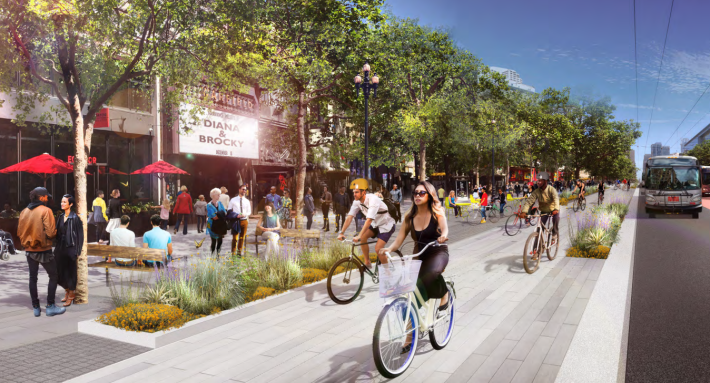
Next week, however, San Francisco will get a much-anticipated preview of how all of that will ultimately function--and what the banning of private cars will mean for transit, cyclists and pedestrian safety.
"Just today I was reading about New York’s 14th Street project, which limited car and truck access to improve bus service and cycling," wrote Radulovich in his comments to Streetsblog.
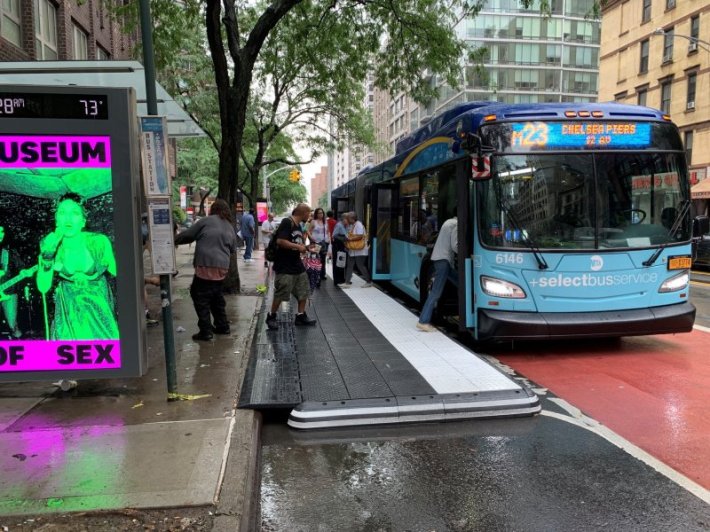
"In just a few months the results are really impressive--24 percent more transit riders on weekdays, 30 percent more on weekends, buses moving 30-40 percent faster, and bus trips 10 minutes shorter on average. Detractors predicted spill-over traffic on parallel streets, but that didn’t happen."
"We’re hoping that the Market Street project will offer similar benefits," he concluded.
What do you think? Do you see serious enforcement problems limiting the positive benefits next week? Or are you anticipating an immediate and greatly improved experience for all users? Post your thoughts below.
Excited about Better Market Street? Walk San Francisco is planning a celebratory walk on Thursday. Details and how to join it here.
Read More:
Stay in touch
Sign up for our free newsletter
More from Streetsblog San Francisco
Commentary: Making Valencia Better for Business
Curbside protected bike lanes with curbside parklets deliver on much-needed economic benefits for merchants while ensuring safety for all




